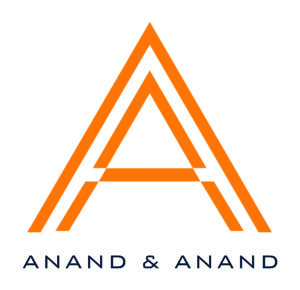This article will be broaching the subject of “fair use” of registered trademarks by spare parts industries. There exists a huge spare parts market for automobile, home appliances, etc. where third parties, manufacture and sell spare parts. These manufacturers could be either original equipment manufacturers (OEMs) or independent manufacturers.

Partner
Anand and Anand
The OEMs work under a licence with the requisite know-how of the parent product and there exists a scrutiny on these manufacturers from the companies for which they manufacture. Independent manufacturers enjoy the same liberty but without any supervision by the companies which spare parts they manufacture.
To identify the fix and fit of a spare part, the OEMs market their products under terms like “suitable for XYZ car” or “meant for ABC printer” or “compatible with 123 cooker”, where XYZ, ABC and 123 are the brand names of the parent products. The independent spare parts manufacturers use the same terms to identify the fit and fix, albeit not an OEM or authorized dealers.

Senior associate
Anand and Anand
So, how will a customer identify an OEM from a non-OEM?
The use of registered trademark by an independent manufacturer is protected by section 30(2)(d) of the Trademarks Act, 1999, which allows them to use third party trademarks for identification purposes.
The interplay between the concept of fair use under section 30(2)(d) and infringement of trademark despite being apparent, is really subtle and can result into disputes. Three key point under section 30(2)(d) are:
- Goods adapted to form part of, or to be accessory to other goods or services;
- The use of the trademark is reasonably necessary in order to indicate that the goods or services are so adapted;
- And neither the purpose nor the effect of the use of the trade mark is to indicate, otherwise than in accordance with the fact, a connection in the course of trade between any person and the goods or services.
Point (a) is moot as all spare parts are adapted to form part of parent products, but point (b) and (c) could use some verbiage.
The question under point (b) is whether the use of registered trademark on the accessory is reasonably necessary. The division bench of High Court of Delhi in Hawkins Cookers v Murugan Enterprises (2012) clarifies the position. The defence under section 30(2)(d) was not appreciated as the gaskets of the defendant were adaptable, not only to the pressure cooker under the trademarks “Hawkins”, but also to other pressure cookers.
The settled position of law is that the use of registered trademarks must not only be reasonably necessary, but shall not be in an eye-catching manner. That means, one cannot use the registered trademark prominently or in the same font and design; rather the use must be unimportant and should reflect only the adaptability. However, once the defence under section 30(2)(d) is invoked by independent manufacturers, it is inferred that the mark is already being used as a trademark and infringement becomes implicit.
This brings us to point (c), which if read from the bare act, starts with an “and” right after point (b) ends and it is understood that the importance of point (b) and (c) with reference to infringement is apropos.
Point (c) articulates that any use of registered trademarks shall not indicate any commercial connection between the trademark owners and the independent manufacturers. The intent of the legislature was apparent, that one must not ride upon the goodwill/reputation of trademark owners by depicting a commercial connection in the course of trade.
However, there are not many decisions pertaining to “commercial connection” concerning fair use. A single-judge of the High Court of Delhi did delve into this aspect. As the matter is sub-judice before the division bench, we will not be referring to the rationale of the said judgment.
Terms like “suitable for” or “compatible with” might beguile the consumer into believing that the products of independent manufacturers have a commercial connection with the owner of the trademark, giving them a sense of reliability. Therefore, even though the mark is not used in an eye-catching and/or prominent manner, the element of commercial connection may still exist.
Finally, it is clear from the heading of the section 30 that it merely places limitations on the registration and therefore, cannot have any applicability on the inherent common law rights existing in the trademark. The independent manufacturers under the garb of section 30 ought not to play ducks and drakes with the proprietors’ common law rights.
Manish Biala is a partner and Ashutosh Upadhyaya is a senior associate at Anand and Anand

Anand and Anand
B-41, Nizamuddin East,
New Delhi 110013, India
www.anandandanand.com
Contact details:
Tel: +91 120 405 9300
Email: manish@anandandanand.com
ashutosh@anandandanand.com



























